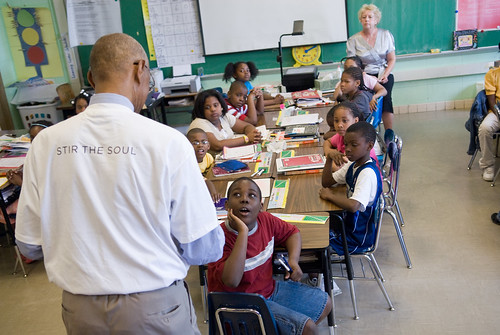Teachers, Start Your Engines
As any one who knows a teacher can attest, teachers begin planning and setting up their classrooms well before the first bell of the school year rings. Before my first day teaching at a K-8 school in East Harlem, I worked an entire week setting up my classroom to promote learning and interactivity in an organized way. I had created colorful posters with how-to tips and broken the room into various spaces for lessons, group activities and quiet reading time. The face of my classroom, which a website provides for organizations, was intended to show students what their experience was going to be like and reflect what I was all about. I wanted them to feel comfortable and know where to sharpen their pencils or pick up a dictionary and I wanted to have a set-up that made it easy for me to move around the room to monitor student interactions and offer help where help was needed. Think of your website in this way. You want to give visitors the things they need and to have an easy way to monitor progress.
The importance of modeling cannot be emphasized enough. Time and time again, I found that my students needed a hands-on example to understand what I was asking of them before they could begin writing a personal essay, for instance. Even those who already knew the basics appreciated seeing my examples so they had an idea of what was expected and where room they had for creativity. Think about how helpful it would be for fans if you provided a sample note or video or photo gallery about your cause, then laid out steps and materials to help them create something uniform but uniquely theirs and then gave them the go-ahead to produce a personalized message about what your cause means to them to share with families and friends. Never leave your students with a directive that isn’t supplemented by an explanation or set of quick facts, FAQs, examples and references.
Conclusion
Give your students and opportunity to share their work with family members, friends and classmates (or fellow cause advocates.) Just like non-profit communications, in a classroom, feedback is priceless. I used to end my class periods by having students jot down a question they had about the lesson or a few sentences about what they had enjoyed learning about the most. At the end of a big unit, I held a celebration party, during which I let students display their work and share their stories. After a campaign, celebrate your advocates’ hard work and invite them to some places and spaces to share, whether it’s online or in person. This gives them something to look forward to as they create their projects and gives you the opportunity to thank them for their efforts. Plus, it’s fun and it leaves a them with a sense of accomplishment and a feeling of empowerment.



